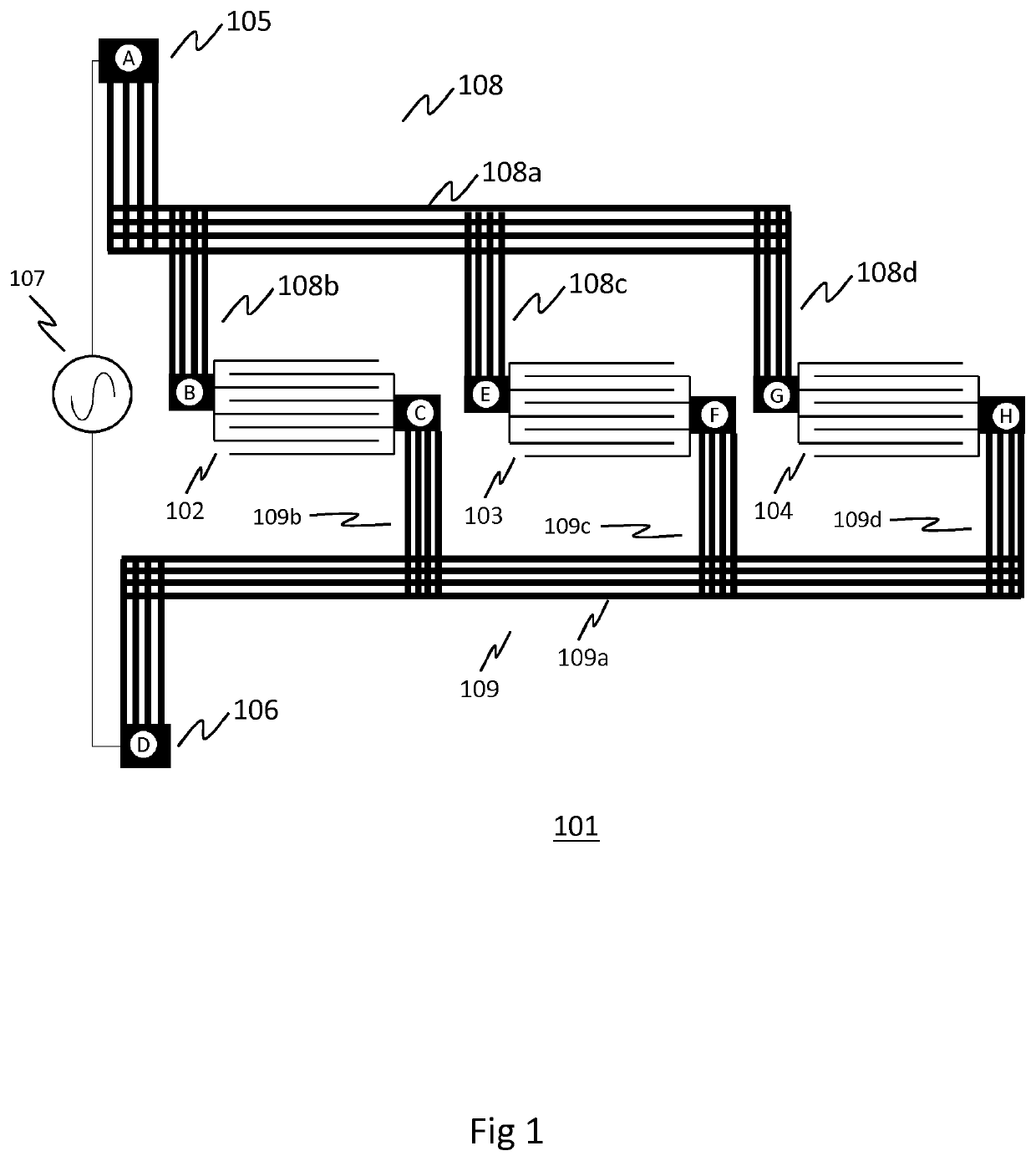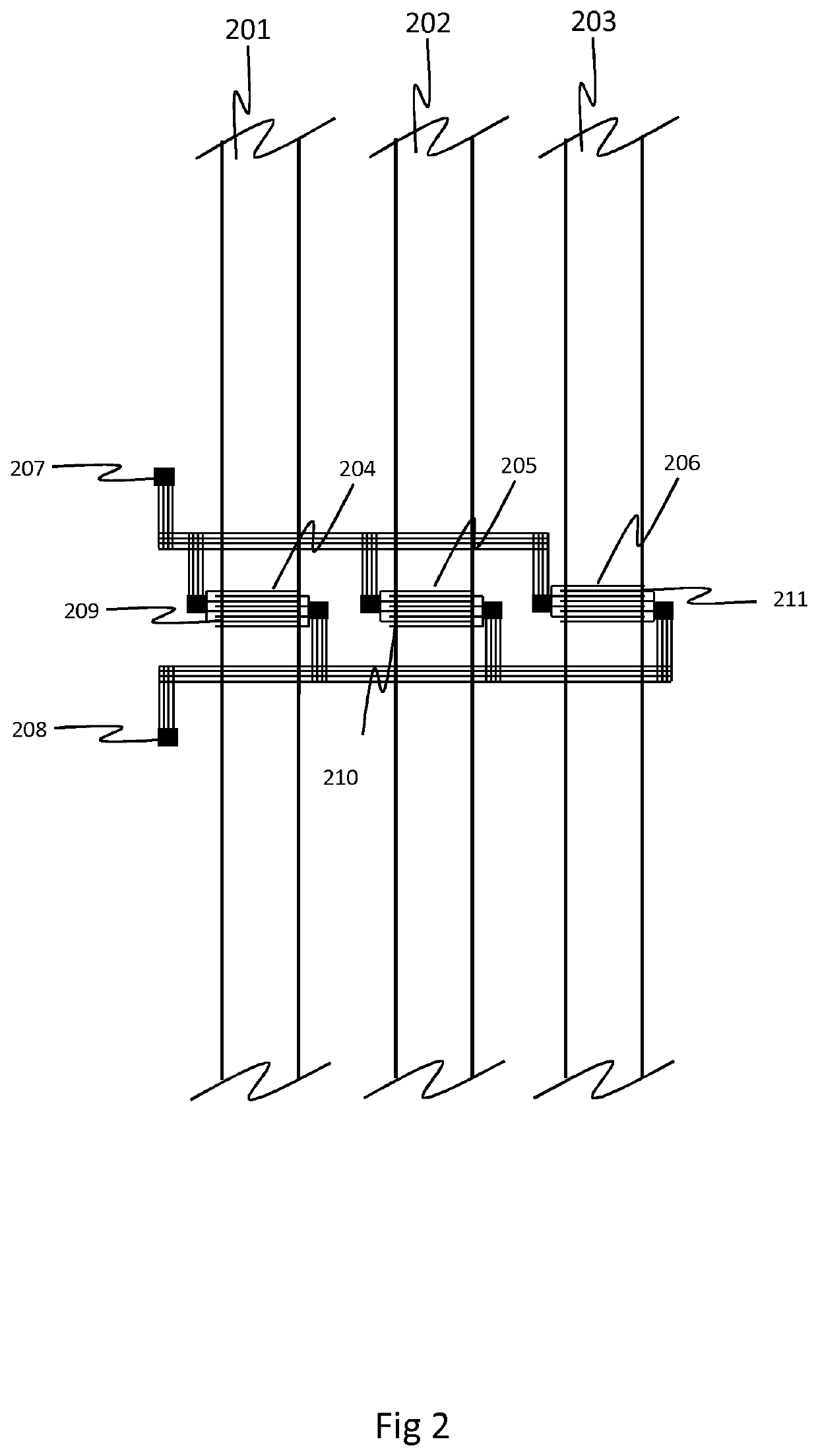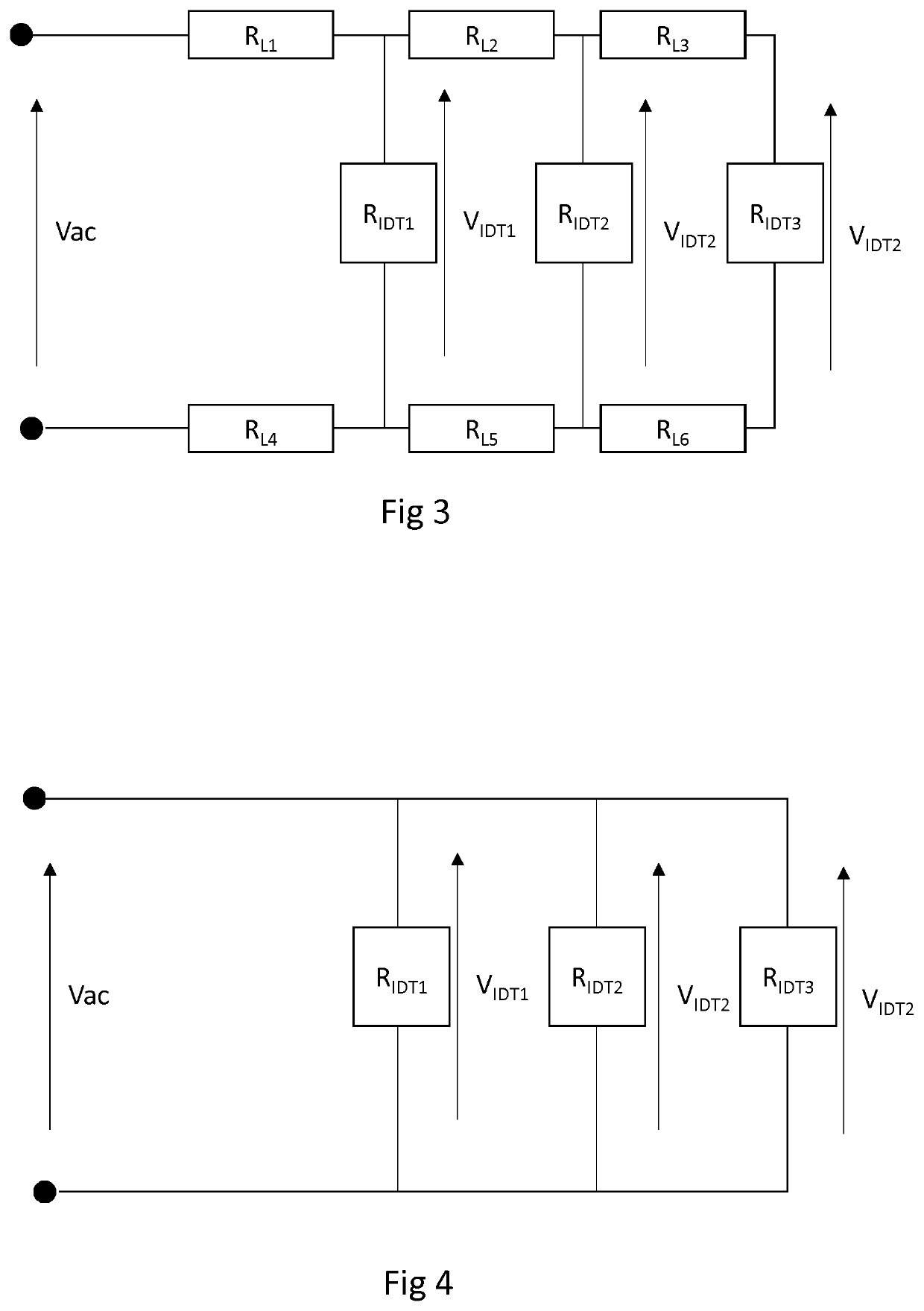Microfluidic device with dep arrays
a microfluidic device and array technology, applied in fluid controllers, solid separation, laboratories, etc., can solve the problems of unreliable diagnostics, multiple dep electrode arrays, and high power requirements for implementing microfluidic devices. , to achieve the effect of increasing the cost and size of the devi
- Summary
- Abstract
- Description
- Claims
- Application Information
AI Technical Summary
Benefits of technology
Problems solved by technology
Method used
Image
Examples
Embodiment Construction
[0042]FIG. 1 provides a simplified schematic diagram of an arrangement for supplying an alternating current to a plurality of electrode arrays for use in a microfluidic device for selectively capturing target particles using dielectrophoresis (DEP). The examples described use positive DEP (pDEP).
[0043]The arrangement 101 comprises a first electrode array 102, second electrode array 103 and third electrode array 104. Each electrode array comprises an interdigitated electrode (IDE) array. In a typical implementation, more electrode arrays may be used (for example 32 parallel channels each with its own electrode array—each channel being 2 mm in width—gives an appropriate footprint for a POC device), but for clarity only three are shown in FIG. 1.
[0044]Whilst the figures show a linear interdigitated electrode array, it would be understood that arrays of differing physical conformations could be used, for example interdigitated spiral electrodes could be used.
[0045]The first, second and ...
PUM
 Login to View More
Login to View More Abstract
Description
Claims
Application Information
 Login to View More
Login to View More - R&D
- Intellectual Property
- Life Sciences
- Materials
- Tech Scout
- Unparalleled Data Quality
- Higher Quality Content
- 60% Fewer Hallucinations
Browse by: Latest US Patents, China's latest patents, Technical Efficacy Thesaurus, Application Domain, Technology Topic, Popular Technical Reports.
© 2025 PatSnap. All rights reserved.Legal|Privacy policy|Modern Slavery Act Transparency Statement|Sitemap|About US| Contact US: help@patsnap.com



